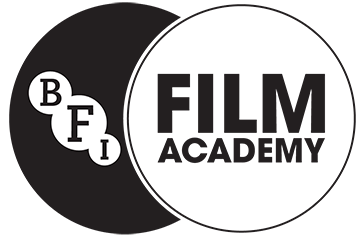Review and critique at least one short film production
“Dawn of the Deaf” is a 2017 short horror film written and directed by Rob Savage. The narrative alternates between four separate accounts from different people – we’re shown two women in a deteriorating relationship, a man giving an acceptance speech and a girl being raped by her stepfather. Aside from occasional intermissions of an internet video in which two masked men make fun of deaf people, all of these different narratives show people struggling with an inability to hear.
The film boasts a strong direction from Savage. He has clearly utilises nearly every filmmaking technique in order to create a distinct tone. The use of slow, static and intimate shots mixed with shaking hand held camera work creates a subliminal sense of unease and disorientation. The muted colour palette and film grain texture makes the stories feel grounded and instills a sadness whilst watching that makes the dark scenes even more upsetting.

There are two specific shots in this film that clearly illustrate Savage’s impeccable directing talents. During the scene in which the deaf couple are aggressively arguing exclusively with sign language, the translation text is appearing across the bottom of the screen as usual however the words are obscured by the two women’s bodies as the camera swings around them – this creative use of simple translation text perfectly conveys the miscommunication between the two characters.

Also, later in the film, we see one of the men who were filming the internet prank video convulse as the mysterious noise begins to hit him. The camera drops to the floor and we see him stumble above it before blood spurts from his mouth directly onto the lens. This bathes the whole screen in red and we see the now obscured and blurry vision of the man’s death. This makes the event feel that much more horrific.

The original score composed by Patrick Jonsson is incredibly creative and used in perhaps the least generic way possible. It was employed sparsely, often cutting to silence to allow the audience to empathise with the deaf characters and experience the situation as they do. However, when the music rose – it was a dark, electronic sound. The throbbing bass and droning synths creating more of a soundscape than a film score, only really serving to boost the audiences unease and fear which it wholeheartedly achieved.
The cross-cutting of parallel action throughout the whole film should have been confusing and jarring, however the way in which Riccardo Servini edited all the different narratives together along with the Savage’s sound script lends to the stories working together. Each one begins tense, yet quite benign. However, as the film continues, each situation gets progressively worse and worse. As all the story lines reach their crescendo, they are all abruptly halted by the same thing – the noise that kills humanity. This was a subtle way to connect all the different plots and it worked brilliantly.
This film is intriguing as it spends the majority of its run time as a raw, mature insight into the pain and complexities this disability brings, however by the time the closing credits ran, it had slowly snowballed into an exaggerated vision of science fiction horror. Upon first viewing, it was admittedly quite jarring to be invested in each character’s situation whilst in the mature and sympathetic mindset the film clearly desired – only to be then suddenly confronted with zombies devouring a hapless victim with a spoof movie title plastered across the screen.

After doing some additional research however, it became clear that this short was intended not as a standalone project, rather more of a concept for a possible feature film. Re-watching the film with the prospect of this story being continued made the shift into madness much more palatable.
To conclude, this film is brilliant. It’s creative direction and intriguing script boosted by a chilling score and great performances made it a very commendable short. It maybe isn’t one to be watched multiple as there are many scenes that are uncomfortable and upsetting to watch. However, that does not detract from the fact that Rob Savage has created a stellar lesson in filmmaking and the thought of this concept being expanded on in the future is very exciting.

George you have written a well observed and insightful film review, which demonstrates you are highly capable of critically analysing film. Well done, you have completed this section.
It’s interesting that you interpret the obscured subtitles to “convey the miscommunication between the two characters”. I had thought that this was Savage showing us what it can be like for deaf people trying to understand conversations between non-deaf people. I think both interpretations work. What do you think?
Agreed, I do think that Savage was attempting to shed light on the various stresses and pressures that deaf people experience. However, considering that the film was continuously cross-cutting between parallel narratives, I tried to treat them each as singular stories. And so, during the altercation between the two women in the underpass, I felt that the use of obscured subtitles was intended to convey the miscommunication between them considering that’s what we had been shown during the previous scene in the cafe. But I do absolutely agree with you when it comes to the film’s wider social commentary on the hardships of disability. In reference to this scene, I think the argument could be made that the subtitles are intended to illustrate how being deaf leads to what would normally be an easily resolvable situation being rendered frustratingly difficult.